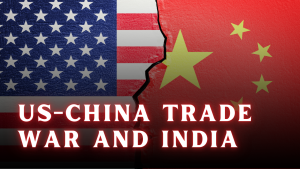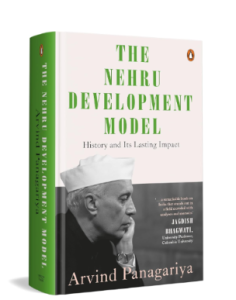Font size:
Print
India at a Strategic Crossroads
A Profound Shift in the Global Order
Context: India is standing at a historic inflection point, reminiscent of the era when Vasco da Gama arrived in Kozhikode in 1498, encountering a complacent Zamorin unprepared for the seismic shift in global trade.
More on News
- Today, however, the change is not in trade routes but in the restructuring of global value chains.
- With India poised to become the world’s third-largest economy, the stakes could not be higher.
End of the Post-Colonial Global Order
- Post War Order: The post-World War II global order—characterised by multilateralism, donor-recipient divides, and rule-based global governance—is breaking down.
- Institutions: Institutions like the World Trade Organisation (WTO) and the United Nations have seen declining influence, especially as emerging powers challenge Western dominance.
- China’s Rise: China’s rise as the largest donor and a manufacturing powerhouse, surpassing the U.S. in several metrics, has upended the old paradigm.
- Pandemic: The COVID-19 pandemic laid bare the limitations of G-7-led globalisation, with leading economies scrambling for essential supplies while ignoring global equity.
- G-7: Now, the G-7 is fragmenting, and institutions such as BRICS are gaining traction, receiving increasing membership interest as they offer an alternative to the Western-centric order.
New Economic Architecture Is Emerging
- Shifting Balance: The global economic balance is rapidly shifting.
- Since 2020, India, China, the U.S., and the European Union have driven nearly 75% of global economic growth.
- Asia: With Asia regaining its historic share of global wealth and power, the world is moving toward multipolarity.
- Declining MFN: In this evolving landscape, the decline of the WTO’s “most-favoured nation” principle opens the door for regional cooperation frameworks.
- Choice to India: India must now strategically leverage the dismantling of the existing trade order, much like China used WTO membership to power its own rise.
- India’s leadership has signaled its intent, with Prime Minister Narendra Modi declaring this the “Asian Century.”
- Strengthening economic partnerships with ASEAN, China, and the African Union offers India the chance to co-create a new cooperative global framework rooted in shared prosperity.
Towards a Post-WTO Global Trade System
- With the G-7 and G-20 losing their agenda-setting roles, India has a unique opportunity to shape a new trade and governance paradigm.
- This includes proposing comprehensive, composite trade agreements that integrate goods, services, investment, and infrastructure.
- Annual reviews of national impacts, reduction of non-tariff barriers, and a shift from tariff-based to technology-based trade gains will be critical.
- India’s seasoned diplomatic corps should be tasked with drafting new global governance principles tailored to an equal, multipolar world.
- This framework must acknowledge that developing nations no longer seek handouts—they demand equitable participation and influence.
Bridging the Technology Gap: A Wake-up Call
- Historically, India’s foreign policy focused on balancing major powers rather than building long-term strategy.
- From the Bandung Conference in 1955 to the Non-Aligned Movement in 1961, India emphasised peace over economic development, often to its own detriment.
- Unlike China and Western powers, India failed to deeply invest in technological innovation through academia-industry partnerships—critical drivers of both trade and geopolitical power.
- That must now change. India needs a national consensus on fostering talent, enhancing employment, and prioritising technological leadership.
- The current global power shift is no longer about raw trade—it is about innovation, digital sovereignty, and technological edge.
Asian Opportunity: Regional and Global Leadership
- Common Market: India must take a leadership role in forming an Asian common market, engaging ASEAN and African economies through bilateral and regional trade frameworks.
- These markets are projected to surpass U.S. and European consumption, and India’s cooperation with them will solidify its influence in a new trade-centric world order.
- AI: Moreover, India has the potential to become a global leader in artificial intelligence and open-source software.
- With its digital public infrastructure (such as Aadhaar and UPI), vast datasets, and skilled IT workforce, India can create Large Language Models (LLMs) and AI systems that rival the best in the world—transforming it into a true cyber power.
Lessons from China’s Rise
- China’s economic success lies in its national consensus and a homegrown path to development, independent of Western models.
- Prosperity, not just GDP growth, should be India’s core objective.
- Metrics like patents and technological achievements now signal a nation’s future strength more than traditional indicators.
- India must invest in lowering energy costs, particularly electricity, to drive industrial growth.
- Simultaneously, academic-industry-government collaboration must frame “grand challenges” in AI, climate tech, and digital trade that align with India’s unique advantages and global aspirations.


